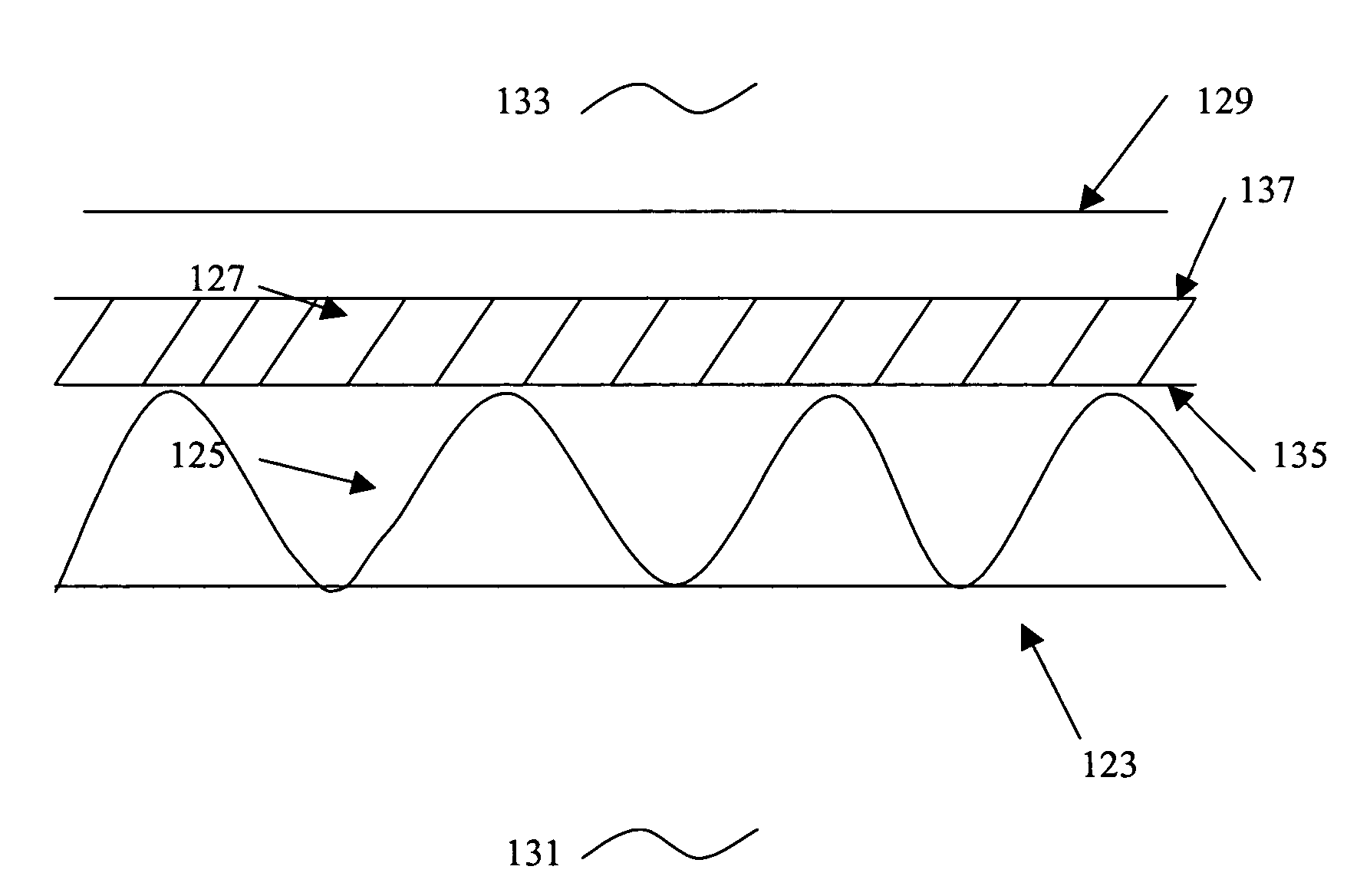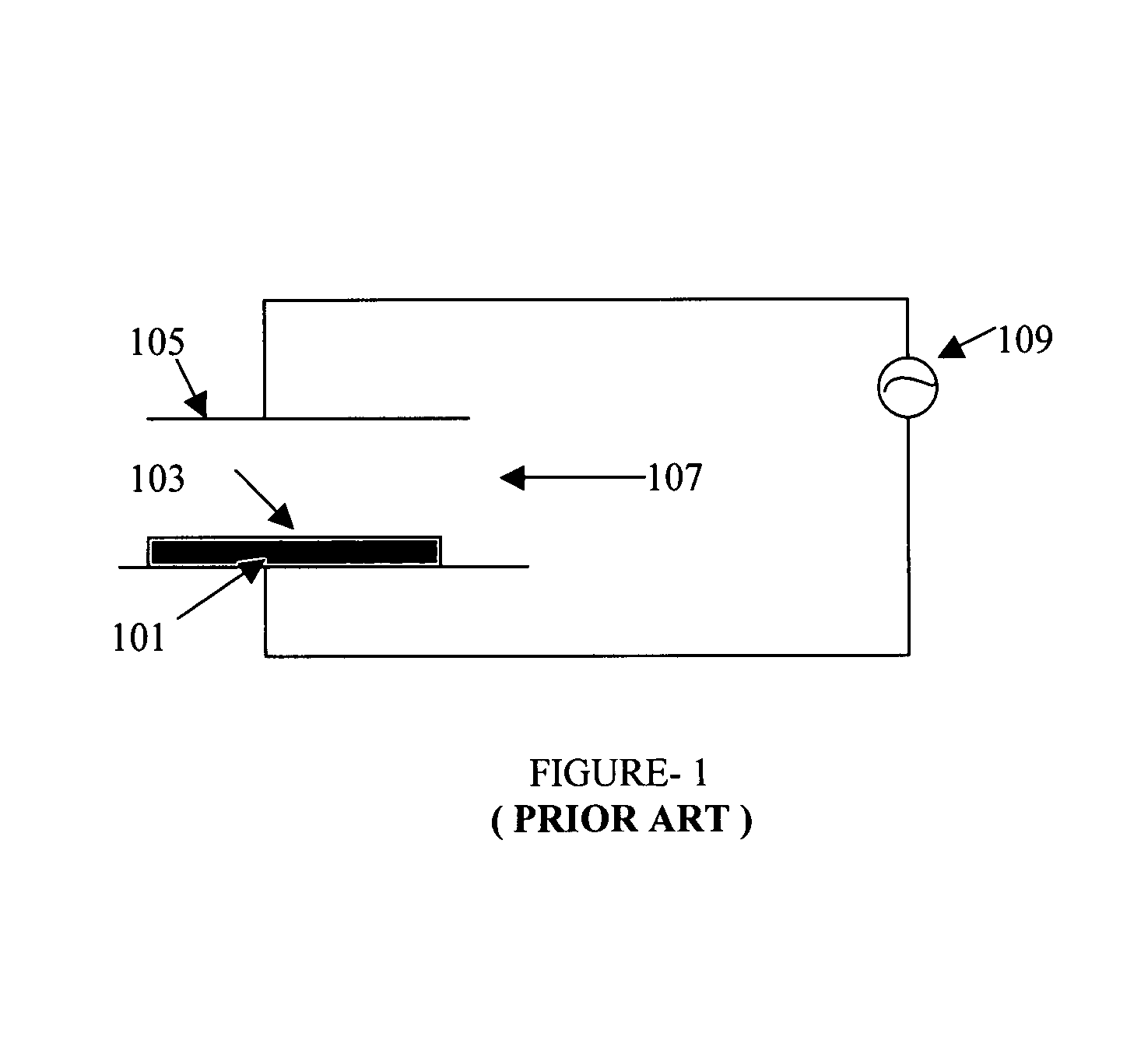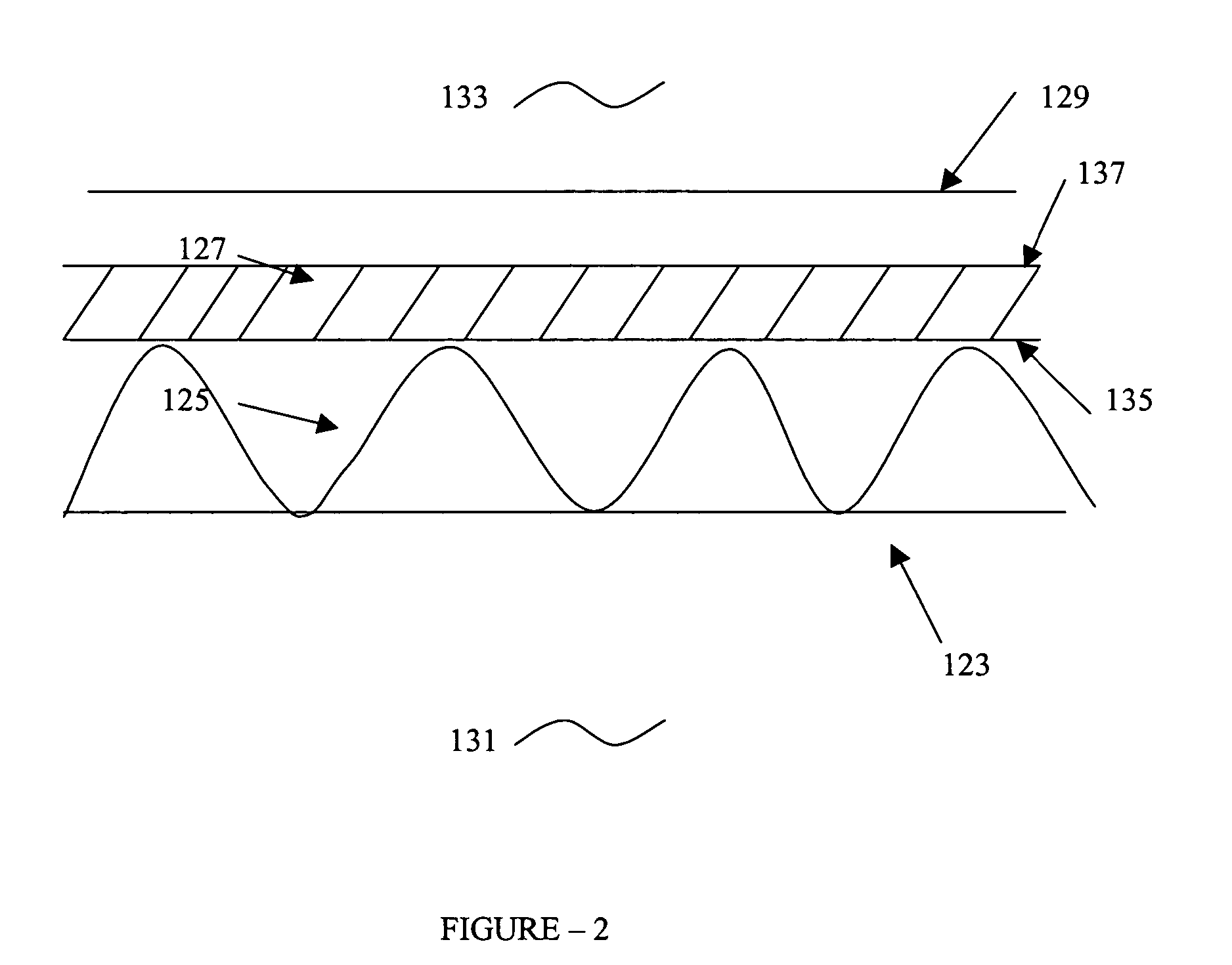Plasma driven, N-type semiconductor, thermoelectric power superoxide ion generator with critical bias conditions
a technology of bias conditions, which is applied in the field of plasma driven, n-type semiconductor, thermoelectric power superoxide ion generator with critical bias conditions, and can solve the problems of ozone unwanted, type of avalanche breakdown, stubborn air,
- Summary
- Abstract
- Description
- Claims
- Application Information
AI Technical Summary
Benefits of technology
Problems solved by technology
Method used
Image
Examples
Embodiment Construction
[0029]Referring to FIG. 2, the proposed invention comprises a first region containing a gas, 131, a first electrode permeable by said gas, 123, a plasma, 125, formed by exciting said first electrode with an AC voltage, a barrier, 127, which separates said first region, 131, from a second region, 133, and a second electrode, 129, and said second region being the open air of the room where the device is placed, and said barrier having an inner surface, 135, and an outer surface, 137.
[0030]Said barrier is a dielectric material whose dielectric breakdown limit is such that the voltage applied to said first electrode does not cause dielectric breakdown through said barrier.
[0031]In one embodiment the barrier is composed of a glass or ceramic composite material such as fiberglass, or G-10. The composite materials have extrinsic defects that create channels by which thermal electrons can leak through the barrier.
[0032]In another embodiment of the invention the barrier is composed of a boro...
PUM
 Login to View More
Login to View More Abstract
Description
Claims
Application Information
 Login to View More
Login to View More - R&D
- Intellectual Property
- Life Sciences
- Materials
- Tech Scout
- Unparalleled Data Quality
- Higher Quality Content
- 60% Fewer Hallucinations
Browse by: Latest US Patents, China's latest patents, Technical Efficacy Thesaurus, Application Domain, Technology Topic, Popular Technical Reports.
© 2025 PatSnap. All rights reserved.Legal|Privacy policy|Modern Slavery Act Transparency Statement|Sitemap|About US| Contact US: help@patsnap.com



